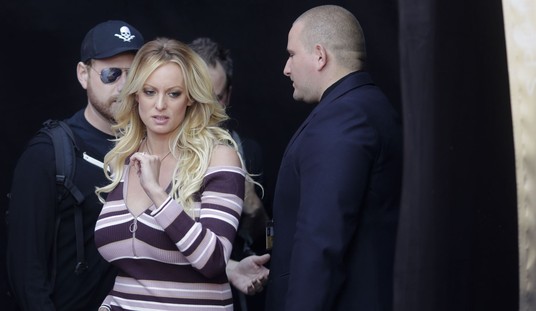American Presidents in their role as father to the nation and commander in chief of the armed force must inevitably write a lot of letters to the families of the dead. Most of these are routine, though some have acquired a political, or a least a curiosity value over time. President Lincoln’s letter to Civil War mother Lydia Bixby commiserating on the loss of her sons was read to great dramatic effect in the movie Saving Private Ryan, both to illustrate the depth of sacrifice of Mrs. Bixby and the humanity of the Great Emancipator. It is however possible however that not all of Mrs. Bixby’s sons reported dead actually perished and that Lincoln actually did not write the letter.
The text has been widely praised as one of Lincoln’s finest works of writing alongside the Gettysburg Address and his second inaugural address.
Some controversy surrounds the recipient, subject, and authorship of the letter. Although her sons died fighting for the Union, Mrs. Bixby seems to have personally supported the Confederacy. Not all five sons died in battle, with records showing that three of them were still alive years after the war. Historians have long debated whether the text was penned by Lincoln himself or by his assistant private secretary, John Hay.
The recent death of Neil Armstrong once again brought to public attention the eulogy that President Nixon did not deliver. Before the success of Apollo 11 was known, William Safire drafted a contingency speech to be delivered in the event astronauts were trapped on the lunar surface.
What Nixon would in part have said in the event of a disaster was:
Fate has ordained that the men who went to the moon to explore in peace will stay on the moon to rest in peace.
These brave men, Neil Armstrong and Edwin Aldrin, know that there is no hope for their recovery. But they also know that there is hope for mankind in their sacrifice.
These two men are laying down their lives in mankind’s most noble goal: the search for truth and understanding.
They will be mourned by their families and friends; they will be mourned by their nation; they will be mourned by the people of the world; the will be mourned by a Mother Earth that dared send two of her sons into the unknown.
But thanks to the skill of the engineers and the astronauts themselves, they were not mourned on that occasion at all and both lived honored lives into old age. The draft went into a file.
Given the number of letters of condolence a commander in chief may have to write it was interesting that in July 2011, President Obama decided to increase the number of letters emanating from the White House to include suicides. This was done apparently to “de-stigmatize” suicide at the behest of a number of political pressure groups. How could he write yet more when there were already so many?
And say, does he write them at all? One of the unanswered questions in Yahoo’s Answers is: “Does President Obama sign condolence letters to families of dead service members?”
The answer is, apparently not. Or at least, not always. The Gateway Pundit notes that the parents of SEALs who died in the August 6, 2011 crash of a Chinook helicopter in Afghanistan happened to compare Presidential letters. They were form letters signed by an electric pen.
The inclusion of suicides in the the recipients of Presidential condolences strongly hinted at automation. “Letters to families of service members who die in war zones will be from the president, and will differ depending on the type of death, as in a combat death versus an accidental death.”
Men may die but mailmerge still lives.
Of almost equal fascination are the letters about Presidents from the dead themselves. A USMA study which examined letters by Osama bin Laden taken during the raid on his hideout found that the fugitive terrorist was busily writing to henchmen about killing US leadership. Of course he wrote them himself. In his missives, Bin Laden especially wanted Obama and Petreus targeted and no one else because the one would put the woeful Joe Biden in office; and the other would eliminate the man man Osama most feared.
Bin Ladin had asked `Atiyya’s predecessor, Mustafa Abu al-Yazid, to task Ilyas, presumably Ilyas Kashmiri, to set up two units, one in Pakistan and another in Bagram, Afghanistan, to target airplanes known to be carrying President Obama and/or General Petraeus on their visits to these areas. He only wanted President Obama and General Petraeus to be targeted.
He explained that the death of President Obama would see the “utterly unprepared” Vice President Joe Biden automatically assume the presidency, which would cause the United States to enter into crisis mode, and “the killing of Petraeus would have a serious impact on the course of the war,” as Bin Ladin considered him to be “the man of this [critical] phase.”
The number of letters from the living to the dead and vice-versa is so large that it’s pity that atheism considers it impossible for them to be answered. One of the attractions of Christian theology is that it believes that the packets will eventually connect; that in the eschatological future all dead letters (pardon the pun) will be delivered and every question answered. In Christian theology the mailman is Christ himself, the one of the few Biblical figures who the faithful believe actually went to Hell. It’s in the Creed: “He descended into Hell. And on the Third Day He arose again,” an event known as the Harrowing of Hell. “This is the Old English and Middle English term for the triumphant descent of Christ into hell (or Hades) between the time of His Crucifixion and His Resurrection, when, according to Christian belief, He brought salvation to the souls held captive there since the beginning of the world.” It is remembered most vividly in the Eastern rite.
the harrowing of hell is also the dominant symbol of Orthodox Easter liturgies. Again, in Western churches the empty tomb is what you will see depicted on Easter Sunday. But Orthodox services recreate the harrowing of hell. Specifically, the priest exits the church with a cross. The sanctuary is immersed in darkness and the doors are closed. The priest then knocks on the door and proclaims, “Open the doors to the Lord of the powers, the king of glory.” Inside the church the people make a great noise of rattling chains which conveys the resistance of hell to the coming of Christ. Eventually, the doors are opened up, the cross enters, and the church is lit and filled with incense. Which is pretty cool. I would have liked an Easter service like this when I was a kid.
Today in our cynical age, we may prefer to think of it as the day when, if it happens, everything finally gets declassified; when we get emailed a decryption key to the secrets of the universe. Until then the letters to and from the dead to the Presidents must remain unanswered, form letter or no.
Belmont Commenters
How to Publish on Amazon’s Kindle for $2.99
The Three Conjectures at Amazon Kindle for $1.99
Storming the Castle at Amazon Kindle for $3.99
No Way In at Amazon Kindle $8.95, print $9.99









Join the conversation as a VIP Member